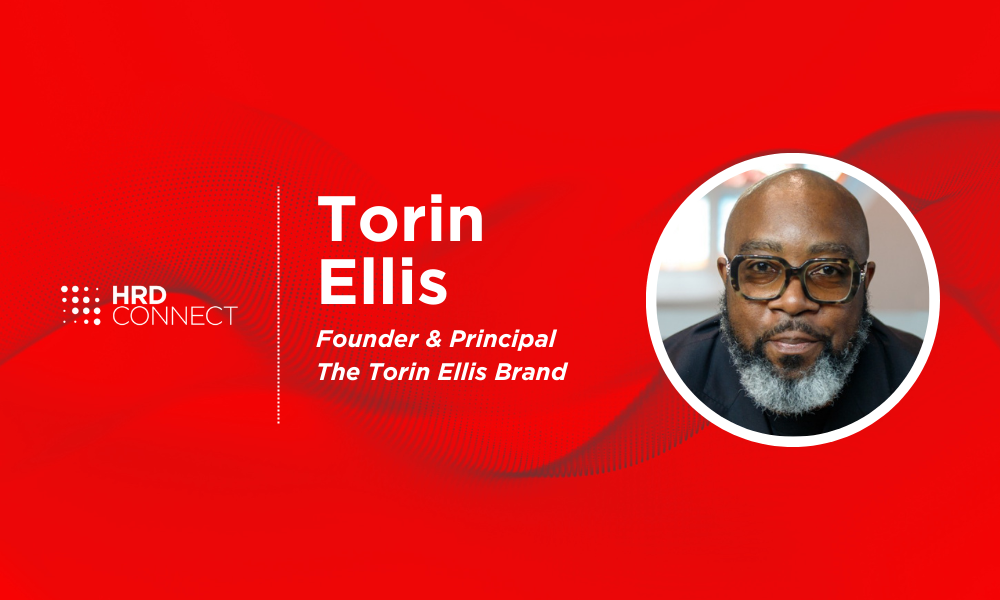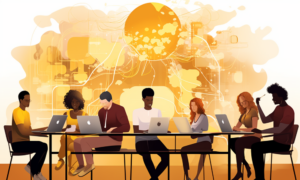From upskilling to advocacy: The future of leadership development programs
- 5 Min Read
“When organizations set up these programs, they approach underrepresented groups thinking that they need mentorship. That they are coming into the equation underdeveloped or not as accomplished as others. And that’s just not the case.”
- Author: Benjamin Broomfield
- Date published: Apr 27, 2023
- Categories

Leadership development programs that promise to upskill and elevate women or other underrepresented groups frequently fail. Instead, they frustrate and even disadvantage their intended recipients.
We know the cost of a lack of diversity at the leadership level. Leadership development programs that assume diverse participants lack the skills their colleagues possess reinforce existing power structures. HR and business leaders cannot draw up these failures to ‘unconscious bias’. They must instead hold themselves accountable for creating leadership programs that truly advocate for underrepresented groups in their organizations.
Torin Ellis joins HRD Connect for an exclusive Q&A on how HR leaders can turn their leadership development scheme from a patronizing program into a valuable vehicle for advocacy and career development.
1. Where do leadership development programs that organizations design for women or other underrepresented groups fail?
Torin Ellis: The first challenge is that organizations trying to support women or underrepresented groups give them less credit than they deserve. Oftentimes when organizations set up these programs, they approach these underrepresented groups thinking that they need mentorship. That they are coming into the equation underdeveloped or not as accomplished as others. And that’s just not the case.
When you look inside organizations, you notice underrepresented individuals are performing on par, if not above par, compared to their colleagues. It’s not a necessity to mentor or upskill them. These programs fail are more focused on development, and less focused on advocacy. That should be turned around.
2. How can organizations ensure that these programs are advocating for diverse candidates, rather than just paying lip service to DE&I?
Torin Ellis: To tip the scale in the other direction, consider who in the workforce you should be advocating for. Ask who has not had an advocate like you sitting in the room. The second question is how to support these individuals and strategically position them to get more exposure. Put them in the spotlight for more challenging and stretch assignments and find ways to give them more responsibility.
It becomes a best practice of changing the way that we support underrepresented individuals. Don’t get me wrong, there is a need for mentorship. But we have to place these individuals on the radars of other leaders and put them in the spotlight for decision-making roles within the organization.
3. Should these schemes focus on any particular area of the business?
Torin Ellis: I don’t think it should be an either-or proposition. Naturally, we have a clear and glaring absence of underrepresented and marginalized talent at the executive level and at the board level. So, we should be working there. We can work in corporate social responsibility and make an impact there, or even within learning and development. Having someone from a marginalized audience curating the learning experience versus the dominant culture might help move the conversation on from data loss prevention to humanity, disabilities, ageism, culture, or social justice.
It’s a matter of looking out over the organization, and asking, where are we absent in terms of representation?
4. What role do biases play in the selection process for leadership programs, and how can organizations address these biases?
Torin Ellis: I want to challenge the idea of unconscious bias. I think that most people are conscious of the decisions that they are making. We put far too much stock in unconscious bias. And it allows us to continue to be complacent and to continue to be mediocre in how we are pursuing these various decisions.
I’m not willing to support the notion that these decisions are being done unknowingly. Take pattern-matching decision-making in the venture capital world. They decide to fund another founder because they fit a certain pattern, they’re predictable, and they come from a certain zip code or certain academic institution. People are far more conscious about the decisions that they are making than we are willing to hold them accountable for. We have to begin holding them to account and moving away from the idea of unconscious decision-making.
5. How can organizations ensure that their leadership development programs are not reinforcing existing power structures and privileges?
Torin Ellis: It’s all found in the conversation itself. I recently heard an individual blurt out “But this is the way we’ve always done it.” The organization was working with a PR firm supporting their people data. But it wasn’t helping them with their D&I efforts. It’s not that the PR firm wasn’t committed to D&I, but there was no one in the room contributing a new angle to the story.
So, when we create leadership development programs, we have to have different people engaged in the conversation. They can help create a story for the employee base about what the organization is doing for its leadership to advocate for underrepresented groups. Ask who is in the room contributing to the strategy and story.
6. What are the organizational consequences when leadership development programs fail?
Torin Ellis: The bottom-line consequences are less employee engagement, lower or disparate productivity, and high attrition. If I’m a business leader and I’m not showing the people inside my organization that I am committed to their development, inspiring them, and advocating for them, why should they be engaged with the work they are doing? Why should they care about the time to close a sales deal or a failed merger and acquisition?
They become disengaged. They become a flight risk. And when they become a flight risk, you are looking at a loss of procedure, protocol, and institutional acumen.
________________
Torin Ellis is the founder and leader of Torin Ellis (TE), a progressive HR boutique with a focus on diversity and inclusion.









